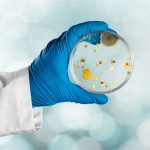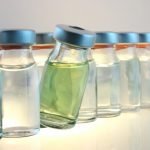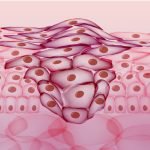Goodbye Pricks: Wearable Biosensor for Real-time Glucose Tracking
Node Smith, ND
Impractical Tracking of Glucose Levels Wearin Your Fingers Thin?
Constantly tracking a person’s glucose level can be incredibly cumbersome, and impractical. There are mechanisms for measuring blood glucose in real time, but mostly involve a small needle that penetrates the skin, and a device that is worn – these are often connected to an insulin pump, for type 1 diabetics.
Blood, Sweat, and Tears Tracking Just Around the Corner
But the tracking of glucose levels through sweat or tears could be right around the corner. Researchers reported this week in the journal ACS Nano that they’ve developed an ultra-thin, flexible biosensor that could be worn as a contact lens or on the back of a wrist watch.1
Biosensors Becoming More Realistic Part of Technological Advances
These types of biosensors are becoming a more and more realistic part of healthcare, as the technological advances make them more and more reliable, and usable. Essentially, the idea is the same as a “fitbit” or other athletic monitor that tracks heart rate or steps taken. The challenge has been developing a membranous interface that is able to measure health markers on a molecular level.
No Pricking, No Poking, No Joking
The need to prick the finger and draw blood is often deterring for people, and vigilant monitoring can wane. But wearable sensors able to detect glucose in tears or sweat have been hampered either because they cannot detect the low levels of glucose in these secretions, or because they stop working when bent.
Nanodetails of the Newest Biosensor Technology
However, the newest biosensor technology uses a combination of nanoribbons – made from indium oxide – glucose oxidase, a natural chitosan film and single-walled carbon nanotubes. Glucose interacts with the enzyme, which sets off a short chain of reactions that create an electrical signal. Testing has shown that the sensor is able to detect glucose in tears and sweat in concentrations from 10 nanomolar to 1 millimolar – which is sensitive enough to be clinically useful. Also, bending the film doesn’t seem to alter its performance.
Source:
- Liu Q, Liu Y, Wu F, et al. Highly Sensitive and Wearable In2O3 Nanoribbon Transistor Biosensors with Integrated On-Chip Gate for Glucose Monitoring in Body Fluids. ACS Nano. 2018
Image Copyright: <a href=’https://www.123rf.com/profile_ammentorp’>ammentorp / 123RF Stock Photo</a>
 Node Smith, ND, is a naturopathic physician in Portland, OR and associate editor for NDNR. He has been instrumental in maintaining a firm connection to the philosophy and heritage of naturopathic medicine among the next generation of docs. He helped found the first multi-generational experiential retreat, which brings elders, alumni, and students together for a weekend camp-out where naturopathic medicine and medical philosophy are experienced in nature. Four years ago he helped found the non-profit, Association for Naturopathic ReVitalization (ANR), for which he serves as the board chairman. ANR has a mission to inspire health practitioners to embody the naturopathic principles through experiential education. Node also has a firm belief that the next era of naturopathic medicine will see a resurgence of in-patient facilities which use fasting, earthing, hydrotherapy and homeopathy to bring people back from chronic diseases of modern living; he is involved in numerous conversations and projects to bring about this vision.
Node Smith, ND, is a naturopathic physician in Portland, OR and associate editor for NDNR. He has been instrumental in maintaining a firm connection to the philosophy and heritage of naturopathic medicine among the next generation of docs. He helped found the first multi-generational experiential retreat, which brings elders, alumni, and students together for a weekend camp-out where naturopathic medicine and medical philosophy are experienced in nature. Four years ago he helped found the non-profit, Association for Naturopathic ReVitalization (ANR), for which he serves as the board chairman. ANR has a mission to inspire health practitioners to embody the naturopathic principles through experiential education. Node also has a firm belief that the next era of naturopathic medicine will see a resurgence of in-patient facilities which use fasting, earthing, hydrotherapy and homeopathy to bring people back from chronic diseases of modern living; he is involved in numerous conversations and projects to bring about this vision.










